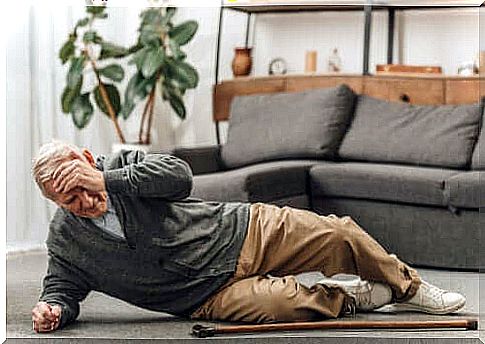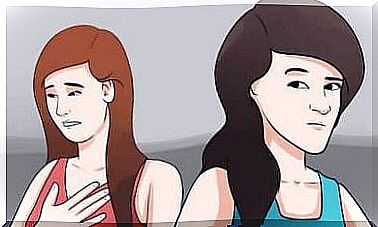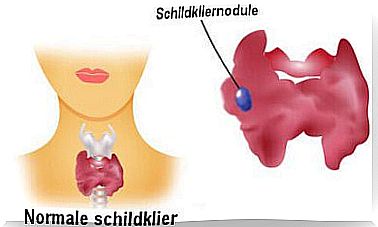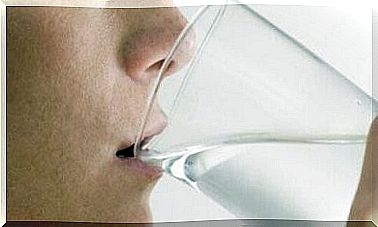Ways To Prevent Falls In The Elderly

It is important to prevent falls in the elderly, so we should all be aware of this situation. Today’s article will describe the possible causes and evaluate the consequences these accidents can have on the health of the elderly.
The World Health Organization (WHO) defines “falling” as an involuntary event in which a person loses their balance and hits the ground or other solid surface that brings them to a stop.
First, age is one of the main risk factors for falls, and its incidence gradually increases with age. The risk of such accidents resulting in serious injury or even death also increases with age.
Risk factors of falls and how to prevent them
These can be intrinsic or extrinsic, so let’s take a closer look at the most common ones.
intrinsic
These factors depend on the person, and can be due to the aging process itself or due to the circumstances that exist at the time. Also, intrinsic factors are those that have the greatest influence and include the following:
- age.
- have made a previous fall.
- visual problems such as cataracts or decreased visual acuity.
- muscle atrophy and musculoskeletal disorders.
- vestibular problems that affect balance.
- cognitive disorders.
Extrinsic

This includes factors that depend on the environment in which the elderly live. Inappropriate footwear can also increase the risk of falling. In addition, the following factors may also be involved:
- poor lighting.
- mess.
- uneven or slippery floors.
- carpeting.
- wires in the house.
The bathroom is another critical place, as bathtubs or shower trays without suitable handles can increase the risk of falling. On the street, some of the factors that increase the risk of falling for the elderly include the following:
- uneven or slippery road surface.
- short-lived traffic lights.
- the absence of slopes.
In means of transport, sudden movements and brief moments of ascent or descent also have an influence. The WHO also states that certain drugs can increase the risk of falling, especially those that act on the central nervous system.
Consequences of falls in the elderly
1. Physical Effects
The physical consequences are those directly related to the fall, such as:
- fractions
- sprains
- injuries
An article in the Revista Médica de Costa Rica y Centroamérica lists fractures and hematomas, among other injuries, as examples of these consequences.
If a fall occurs when someone is home alone, it can sometimes be difficult to get back up because there is no one to help. In addition, it can lead to hypothermia or dehydration, among other serious problems.
2. Psychological Consequences
The emotional impact that a fall can have includes the fear that it will happen again, as indicated in the same study cited in the previous point. In many cases, this leads to a hindrance in the daily activities of those affected.
3. Socio-Economic Consequences
Falls lead to an increase in the resources needed to care for the affected person. At the health care level, a fall leads to an increase in the number of consultations, hospitalizations, operations and rehabilitation.
Ways to prevent falls in the elderly
You should make the necessary changes at home to prevent falls, such as:
- installing adequate lighting.
- keeping the bathroom floor dry.
- installing anti-slip mats.
- adjusting the height of the bed.
Are there stairs in the house? Then make sure that all steps are smooth and non-slip, and that there is a fixed handrail on both sides of the stairs. Another useful document for basic preventive measures is a guide to the prevention of accidents in the elderly from the municipality of Madrid.
The most important way to prevent falls

Primary prevention includes a range of measures aimed at reducing the risk of falls in the elderly. The aim is for the elderly to remain independent, so that he or she can continue to live in his or her own home for as long as possible.
The WHO recommends practicing light to moderate exercise. This is because it increases strength, reduces depression, improves joint pain, and lowers the risk of diabetes and cardiovascular disease. Also, their eyes and ears, as well as any device they use, should be checked regularly for defects.
The second step
It consists of knowing the factors that lead to a fall and then acting on them to prevent it from happening again.
The third step to prevent falls
This includes all measures aimed at the necessary rehabilitation to restore the elderly to an optimal condition. The person involved should also be taught how to get up after the fall.
We recommend rotating the body to support the knees, get into a crawling position and then stand up by leaning on a nearby object.
Falls in the elderly are a major problem that we must prevent
It is estimated that 30% of the over-65s and 50% of the over-80s fall at least once a year. Therefore, prevention should include the proximity of health professionals and other people who can help them in their immediate environment.
Finally, taking into account the recommendations mentioned above and the advice given in the above-mentioned sources, one can significantly improve the safety conditions for the elderly. In this way, the prevention of falls will become much more feasible.









